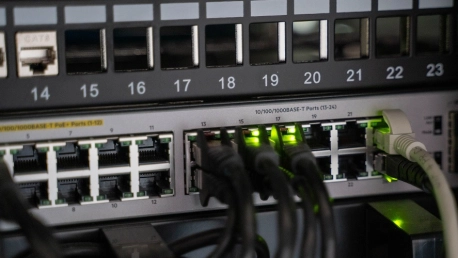Many industries are now relying on industrial switches, including environment protection, mining, transportation, and smart city surveillance. The fact that these switches are manufactured specifically for industrial environments is well known, but do you really know what industrial switches are, and why are they so widely used?
In this article, you will discover why and when to use industrial switches, and what features you should consider when choosing this type of equipment.
Why Industrial Ethernet Switches?
When you want to connect various devices operating in industrial environments, such as robots, sensors, actuators, cameras, wireless access points, and any machine or equipment that has an Ethernet port, you can’t just do it using “indoor” switches. That’s because home, office, and even building switches are not designed to operate in outdoor environments, like manufacturing facilities, transportation, mines, ports, oil rigs, or rail hubs. In this kind of situation, you need industrial Ethernet switches, specially designed to operate in temperatures ranging from -40 °C to +85 °C and featuring increased resistance to dust, moisture, shocks, and vibrations. But these are not the only conditions that industrial Ethernet switches need to meet in order to perform optimally.
Operating in harsh environments
While indoor switches operate in dry, temperature-controlled environments, industrial switches work in areas with high humidity, and wide temperature variations, where they are subject to shocks and vibrations. Therefore, the tighter and more robust they are, the better. But this eliminates the possibility of using fans in the first place, especially as the available power level is also reduced. Top industrial Ethernet switches are self-cooling, featuring aluminum enclosures specifically designed to dissipate heat. Depending on where the switches are located, high-level lightning protection could also be needed to prolong their service life and ensure the normal transmission of data.
Reliability and uptime
Unlike indoor switches, which can be quickly troubleshot by nearby IT teams, industrial switches used in remote environments can sometimes take hours to be fixed by technicians. So, they must have the highest level of availability and the longest MTBF (Mean Time Between Failures). To meet this requirement, top-notch industrial switches use components designed to run in industrial environments and do not include moving parts. Always choose switches featuring a combination of high reliability and passive cooling in order to ensure significant operational gains and extend the life of your equipment. For example, the right switch for your business can include advanced ERPS (Ethernet Ring Protection Switching) technology and Spanning Tree Protocol (802.1s MSTP) into your industrial automation network to enhance system reliability and uptime in harsh environments. On average, commercial switches have a life cycle of 3 to 5 years, while industrial Ethernet switches can easily be kept working for 10 years or more.
Support and compatibility
With a wide variety of features to consider, you need to select the most appropriate equipment for your needs. As the industrial switches market began to take shape, manufacturers started to migrate from proprietary fieldbus communication technologies to Ethernet. The reasons are obvious: Ethernet technology is based on open protocols and eliminates the risk of vendor lock-in, reduces communication costs, and enables Gigabit speeds that support all industrial automation protocols. Industrial switches support virtually any protocol, including Profinet, CIP/Ethernet IP, Powerlink, SERCOS III, CC-Link, or MODBUS TCP. But support for various industrial protocols is not all. Connectivity is also very important for projects that take place in harsh conditions, like transportation, oil and gas, and city surveillance, hence compatibility between industrial Ethernet switches and various devices is required. In these industries, managed industrial switches that are compliant with IEEE 802.3af/at PoE standards are a must, because they are compatible with a wide range of devices and can match the power required by all the connected devices.
Limited space
Standard 19-inch racks are used in some industrial environments, but in most cases, it’s just simple metal boxes. In order to make the most efficient use of available space, industrial switches need to be as compact and as prism-shaped as possible. Choose a vendor capable of delivering products of different formats and sizes.
Conclusion
Switches are one of the most essential building blocks for industrial and corporate networks anywhere in the world. Industrial Ethernet switches come in highly durable cases so that they can fit in confined spaces and operate in harsh environments. We hope this article helped you understand better how industrial switches operate and why are they used in so many industries today.









